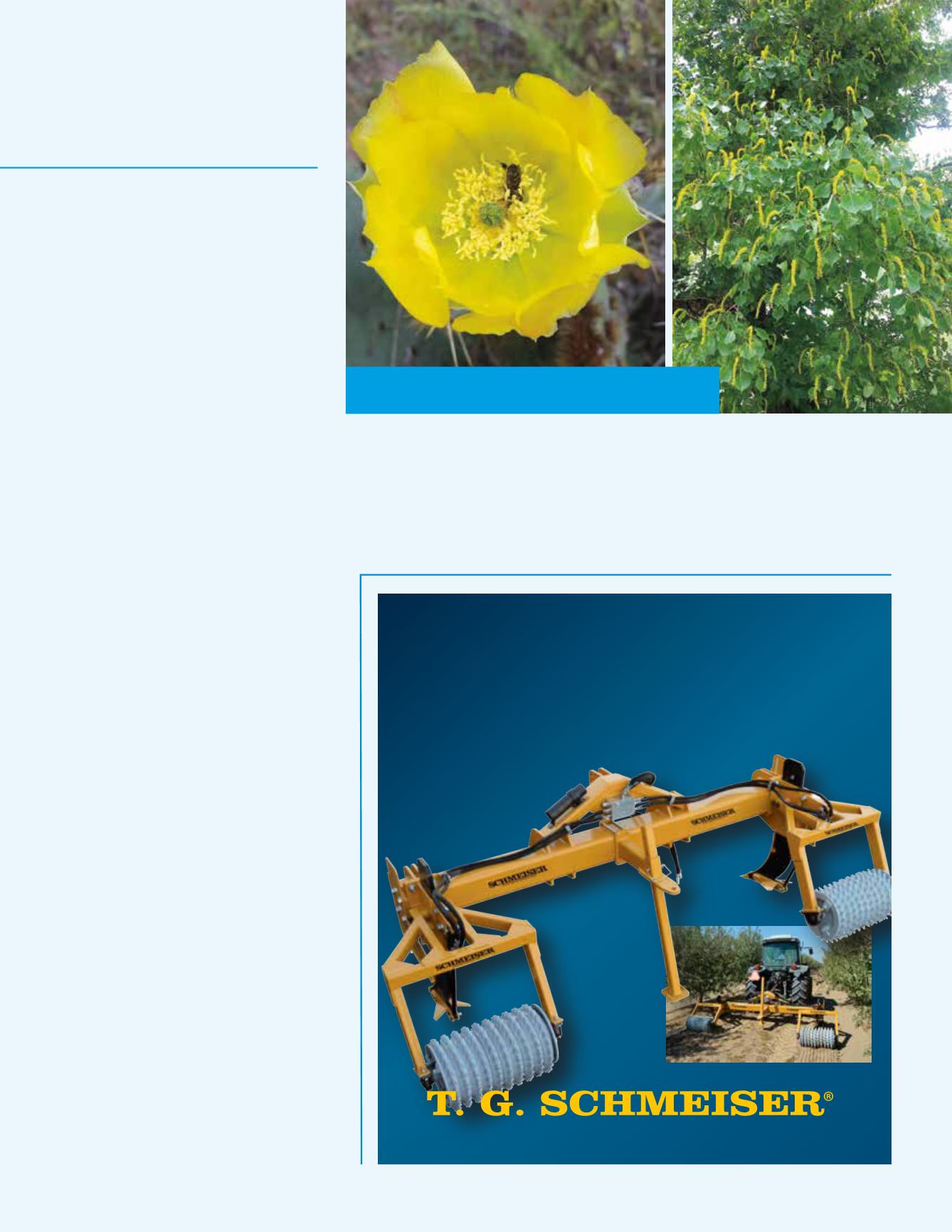
MAY | JUNE 2017
Almond Facts
31
Minnesota/
North Dakota
Our beekeepers are primarily based
out of North Dakota. Most North
Dakota beekeeping operations have
yards in either California or Texas, and
move their bees there after almonds.
Springtime is important, because it
is the end of the colony year. During
this time, beekeepers split colonies
and re-queen, effectively creating new
colonies. Many of our beekeepers put
in a treatment for Varroa mites during
this period. Then, they move their
colonies back up to North Dakota in
May. North Dakota has few people and
low agricultural development. Though
good bee habitat is decreasing in North
Dakota just like elsewhere in the U.S.,
there is a lot of prairie. Bees bring in
tons of alfalfa, sunflower, and clover
nectar, leading to North Dakota’s title
as the biggest honey producing state.
Texas
Most professional beekeepers send at
least some of their bees to the almond
bloom in California. When the bees
return to Texas by mid-March,
beekeepers jump at the opportunity
to split out (or nuc out) their hives,
put in queen cells or mated queens,
and watch the populations grow.
Most of the time, Texas beekeepers
can rely on consistently mild weather
and diverse forage conditions for
their beehives to grow into profitable
honey producing colonies. Contrary to
popular perception, Texas is not only
good for cactus flowers (although they
are beautiful), but a variety of other
plants that bees can thrive on. The
most notable of these is the tree called
Chinese Tallow (Triadica sebifera) that
grows mostly in the Southeast region
of Texas. When the weather is right,
bees can make a good honey crop on
the blossoms, and build up from small
splits into nectar gathering machines.
When the tallow flow is over, most
professional beekeepers move their
hives to the northern U.S. states to
make a summer honey crop.
Photo on left is of Texas cactus flower, photo on right is Chinese tallow.
(Photos courtesy of the Bee Informed Partnership)
Back to Your Roots
1-800-288-8128 •
Better Root Zone Management
from
The twin ripper is equipped
with patented vibrating winged
shanks. Soil structure breakout
is unmatched by any
conventional ripper.
Using the new Mid-Row Ripper
from Schmeiser
“Its the new best
way for planting
orchards and
vineyards, period.”
- John Duarte of
Duarte Nursery
Manage your Root Zone using
the new Mid-Row Ripper.
· 4X Better Soil Breakout
· Water Savings and
Enhanced Drainage
· Superior Mixing of
Amendments in the
Root Zone


